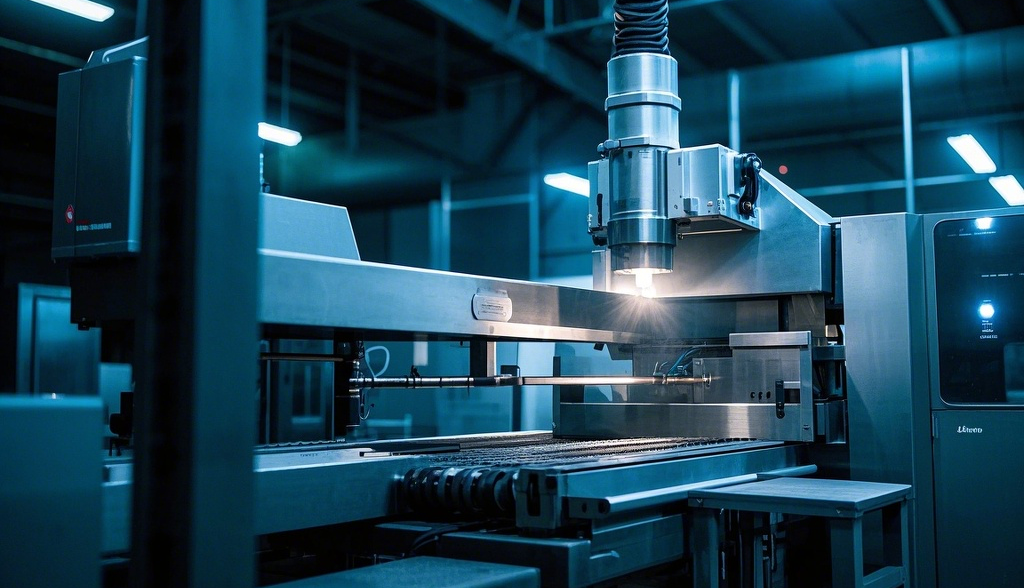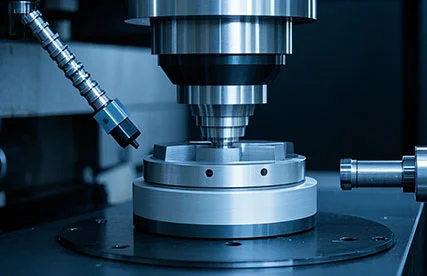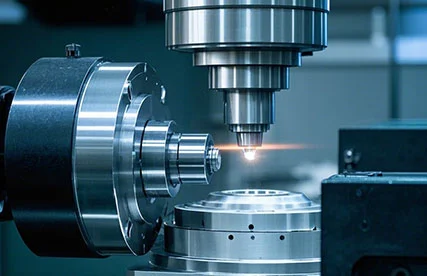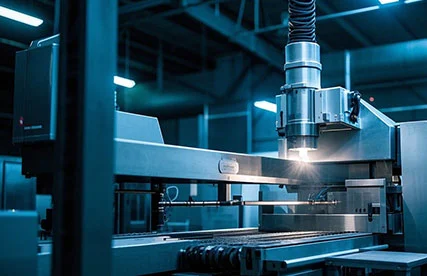Sheet Metal Fabrication allows you to combine various technologies and compatible materials to manufacture diverse products. This article explores the fundamentals of sheet metal fabrication and introduces related processes and their applications. You will also learn about the various advantages of this process, as well as suitable materials and surface treatments for sheet metal fabrication.

Sheet metal fabrication is a technique for manufacturing products from flat metal sheets. Different methods can be used to shape metal sheets, including forming, bending, and cutting processes to achieve the desired form.
Various sheet metal fabrication processes are compatible with many metallic materials, such as stainless steel, aluminum, copper, brass, zinc, and steel. These metal sheets range in thickness from 0.006 to 0.25 inches, with thinner sheets offering higher ductility, while thicker sheets are ideal for heavy-duty applications.
Additionally, sheet metal fabrication relies on computer-aided design (CAD) applications. Three-dimensional files are typically converted into operational control codes, enabling machines to precisely cut, bend, and shape different metal sheets into the final product.
Custom sheet metal fabrication involves multiple techniques, and a deep understanding of different processes is crucial for achieving effective designs. Below is a brief introduction to three sheet metal fabrication techniques:
Cutting Sheet Metal
Forming Sheet Metal
Joining Sheet Metal
Cutting is usually the first stage in sheet metal fabrication. Different shapes or structures can be cut from rectangular metal sheets to meet design requirements. Primary cutting techniques fall into two categories: shear-free cutting and shear-based cutting.
1.1 Shear-Free Cutting
Several processes can effectively cut sheet metal materials without shear forces. These methods use extreme heat, high pressure, or vaporization to shape sheet metal components. They include:
Laser Cutting
Sheet metal laser cutting utilizes a focused laser beam to melt metal in localized areas. Laser cutting machines are suitable for various metals, including non-ferrous metals, low-carbon steel, and stainless steel.
This technology involves two simultaneous sub-processes. The first process concentrates a high-energy laser beam onto the metal sheet, where the material absorbs the thermal energy and vaporizes.
Meanwhile, the second process involves a cutting nozzle supplying assist gas (typically oxygen or nitrogen) to facilitate laser cutting.
Plasma Cutting
Plasma cutting is a thermal cutting process involving ionized gas (plasma) and metal. This method uses intense heat to cut metal, which can produce significant burrs and oxidation zones near the cut area. However, it enables faster cutting speeds, higher precision, and repeatability in sheet metal fabrication.
Plasma cutting tools are only effective for conductive metal sheets. Thus, it is one of the most suitable methods for cutting conductive materials like medium-thickness aluminum.
Waterjet Cutting
This cutting process uses high-pressure water streams to cut sheet metal. Waterjet cutting is versatile and ideal for soft materials, metal foils, fabrics, or rubber. It is also suitable for hard materials like copper, carbon steel, and aluminum.
The pressure involved in waterjet cutting is typically around 60,000 psi, with speeds reaching 610 meters per second, allowing it to cut various types of sheet metal. Additionally, waterjet cutting is a superior alternative to laser cutting technology.
1.2 Shear-Based Cutting
These processes use shear forces to overcome the metal's ultimate shear strength and cut the material. Dies, punches, and shear presses are usually required to fully cut the metal. Techniques in this category include:
Machine Shearing
Shearing is suitable for large-scale applications and cutting soft materials like aluminum and low-carbon steel that do not require smooth surfaces. It produces straight cuts on flat metal sheets by applying shear force, causing the material to split at the cutting point.
This method is highly cost-effective for mass-producing thousands of sheet metal parts within short lead times. However, since shearing can cause burrs and material deformation, it may not be ideal for applications requiring high-quality surface finishes.
Punching
Punching uses shear force to create holes in sheet metal. In this sheet metal fabrication process, the scrap material is removed from the hole, while the remaining sheet becomes the final part.
Punching is suitable for creating holes and cutouts of various shapes and sizes. However, it requires significant time investment, and proper matching of dies and punches is essential.
Blanking
Blanking is an ideal process for cost-effective sheet metal fabrication. It uses a blanking punch to remove a portion of the metal sheet from a larger blank. The punch generates a "blanking force" on the sheet, while the die holds the material in place during the process.
This process offers high repeatability, dimensional control, and precision, making it suitable for manufacturing economical custom sheet metal parts.
Sawing
Sawing involves using a toothed tool to create a series of tiny cuts in the metal material. The teeth use shear force and friction to tear through the material. Band saws with fine or micro-set teeth are suitable for cutting brass, aluminum, and other non-ferrous metal sheets.
Horizontal band saws can cut long bars into desired lengths, while vertical band saws enable complex cuts for precise contours on sheet metal parts.
Sheet metal forming techniques reshape materials while maintaining their solid state. However, their applications in custom sheet metal fabrication vary. This section introduces basic forming techniques used in sheet metal processes.
Sheet metal bending is highly cost-effective for small- to medium-scale production. It involves applying force to deform the metal surface and bending it at the desired angle to achieve the required shape. Press brakes and rolling machines are commonly used for this purpose. This technique is suitable for spring steel, copper, and 5052 aluminum.
Rolling gradually reduces or balances the thickness of metal pieces using a pair of rollers. These rollers rotate continuously, generating compressive forces that alter the workpiece's shape.
Cold rolling and hot rolling are the two primary rolling processes. Cold rolling is performed at room temperature, while hot rolling occurs above the material's recrystallization temperature. Typical rolled sheet metal parts include discs, stamped components, wheel rims, and pipes.
Hemming is a custom sheet metal fabrication process where the edge of the sheet is folded onto itself to create a double-layered area. It typically consists of two stages. The first stage involves blending the metal sheet and placing it into a V-die, while the second stage removes the material and flattens it in a flattening die.
Hemming effectively reinforces part edges and improves their appearance. The process offers high precision, aiding in the production of parts with superior surface quality. However, material deformation often occurs during hemming, leading to dimensional changes.
Curling attaches a rounded hollow roll to the edge of a metal sheet. The process generally involves three stages. The first two stages form the curl's curve, while the third stage closes it.
Sheet metal curling effectively removes sharp, untreated edges from workpieces, making them safer to handle. Additionally, curled edges enhance strength. However, curling can cause burrs and material deformation, requiring extra care during the process.
Below are the joining techniques involved in sheet metal fabrication:
Welding is a standard process that heats sheet metal to its melting point and secures it with a welding gun to join components. It is a fundamental process in the final stages of sheet metal engineering. Common sheet metal welding techniques include:
Shielded Metal Arc Welding (SMAW)
Metal Inert Gas (MIG) Welding
Tungsten Inert Gas (TIG) Welding
These techniques vary in approach but share the goal of joining metal sheets by melting the edges and filler material.
Riveting involves drilling holes in the metal sheets to be joined and installing rivets. After insertion, the rivet tail is deformed by squeezing, flattening it to prevent detachment. Riveting is suitable for non-ferrous parts like aluminum and copper.
There are two types of riveting: cold riveting and hot riveting. Cold riveting is suitable for non-ferrous and light metals with diameters under 10 mm. In contrast, hot riveting applies heat (1000–1100°C) to steel rivets exceeding 10 mm in diameter.
Sheet metal fabrication encompasses various techniques that benefit many industries in component manufacturing. Key advantages include:
Lightweight Component Production: Ideal for industries like aerospace and automotive that require lightweight parts.
Wide Range of Technologies and Materials: Compatible with multiple metals (e.g., copper, stainless steel, aluminum) and processes.
Efficiency and Precision: Enables fast, high-precision manufacturing with minimal human error.
Common sheet metal materials include:
Stainless Steel
Hot-Rolled Steel
Cold-Rolled Steel
Pre-Plated Steel
Carbon Steel
Aluminum
Copper
Brass
Surface finishing enhances functionality and aesthetics. Options include:
Powder Coating
Sandblasting
Polishing
Electroplating
Anodizing
Laser Engraving
Sheet metal fabrication is used in:
Automotive: Hoods, fenders, and roofs.
Aerospace: Lightweight, high-precision components.
Medical: Surgical tools and MRI equipment.
Enclosures: Protective casings for sensitive devices.
Key design considerations:
Uniform Wall Thickness: Maintain consistent thickness for part geometry.
Hole and Slot Orientation: Ensure proper diameter and spacing.
Bend Allowance: Add extra material length for flat patterns.
Bend Radius: Match internal bend radius to material thickness to avoid defects.
Sheet metal fabrication is an excellent choice for manufacturing parts, offering advantages like efficiency, precision, lightweight production, and material versatility. Understanding the various methods, applications, and design tips is crucial for the success of your sheet metal projects.


